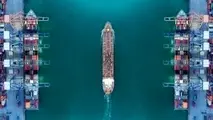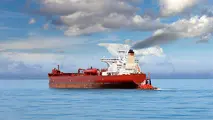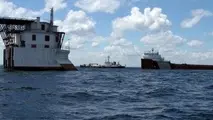NTSB Cites That Loose Wire Led to Vessel Power Outage in 2024 Baltimore Bridge Crash
The National Transportation Safety Board said on Tuesday that a loose wire led to a power failure on the cargo ship Dali that crashed into Baltimore's Francis Scott Key Bridge in March 2024, killing six people and wrecking the bridge.

The National Transportation Safety Board said on Tuesday that a loose wire led to a power failure on the cargo ship Dali that crashed into Baltimore's Francis Scott Key Bridge in March 2024, killing six people and wrecking the bridge.
The NTSB is holding a hearing in Washington to determine the probable cause of the incident that killed six construction workers on the bridge.
The board staff said they are recommending operators complete periodic inspections of high voltage switchboards and proposing changes that would allow ships to more quickly recover from loss of power.
The NTSB has said previously the Dali lost electrical powerseveral times before the crash into the Key Bridge, including experiencing a blackout during in-port maintenance and shortly before the crash.
Power outages happen at sea and the NTSB has been considering new recommendations to prevent catastrophic collisions.
ASSESSING BRIDGE SAFETY
In March the board called for urgent safety assessments of 68 bridges in 19 states including crossings like the Golden Gate Bridge, Chesapeake Bay Bridge, Brooklyn Bridge and George Washington Bridge.
The review focuses on bridges built before 1991 and frequented by ocean-going vessels that have not undergone vulnerability assessments.
The crash of a Mexican Navy training ship into the Brooklyn Bridge in May also raised concerns about risks to bridges from vessels.
The NTSB said last year that the Dali lost power about four minutes before the crash when electrical breakers unexpectedly tripped, causing a loss of power to all shipboard lighting and most equipment when it was 0.6 mile (1 km) from the bridge.
A replacement bridge was initially estimated to cost $1.7 billion to $1.9 billion and be completed by late 2028. On Monday, state officials said they now expect the bridge will cost $4.3 billion to $5.2 billion and open to traffic only in late 2030. They cited a new pier protection system and a new longer, higher design as reasons for the increased costs.
The FBI is conducting a criminal probe into the collapse.



